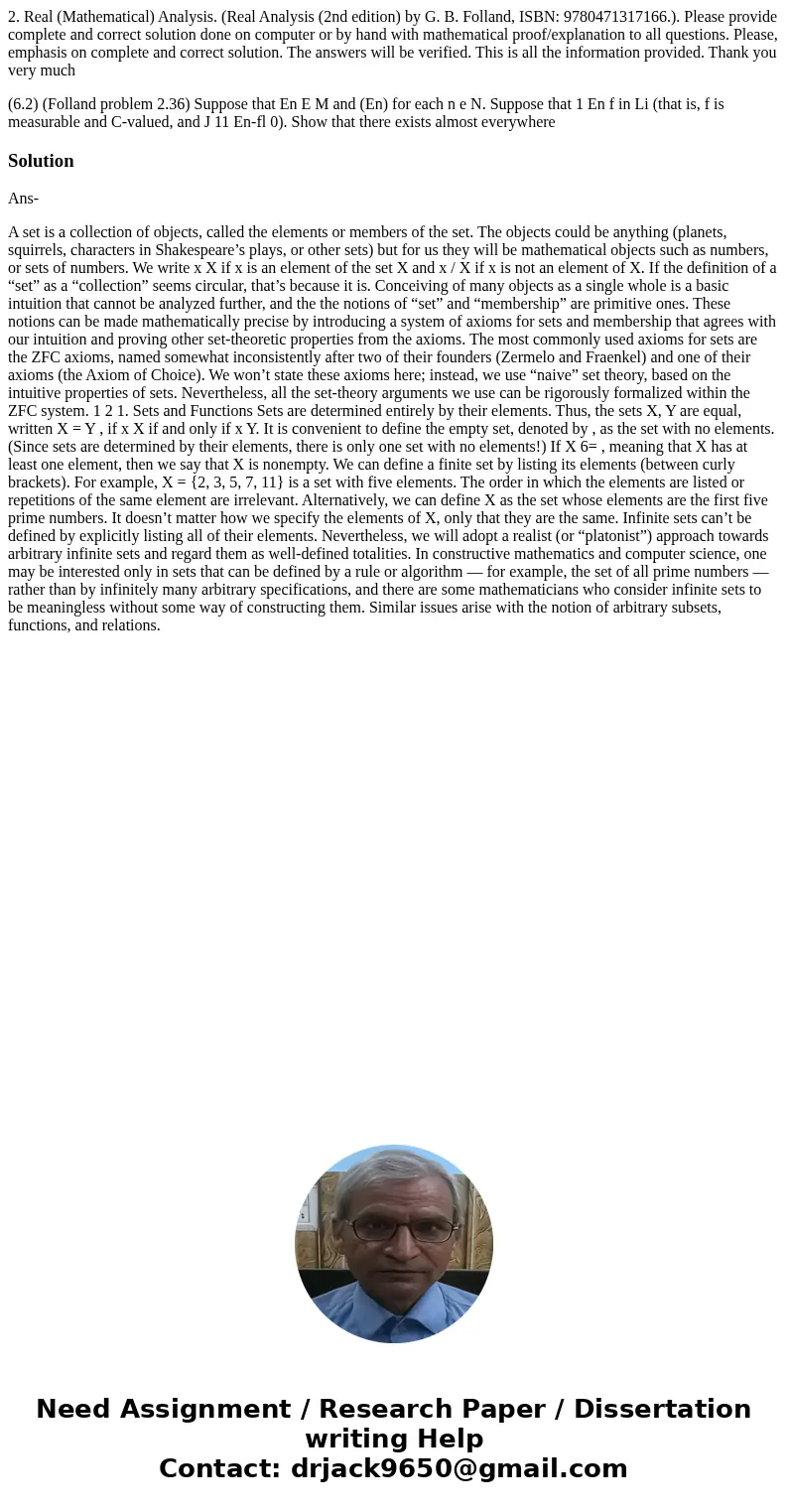2 Real Mathematical Analysis Real Analysis 2nd edition by G
2. Real (Mathematical) Analysis. (Real Analysis (2nd edition) by G. B. Folland, ISBN: 9780471317166.). Please provide complete and correct solution done on computer or by hand with mathematical proof/explanation to all questions. Please, emphasis on complete and correct solution. The answers will be verified. This is all the information provided. Thank you very much
(6.2) (Folland problem 2.36) Suppose that En E M and (En) for each n e N. Suppose that 1 En f in Li (that is, f is measurable and C-valued, and J 11 En-fl 0). Show that there exists almost everywhereSolution
Ans-
A set is a collection of objects, called the elements or members of the set. The objects could be anything (planets, squirrels, characters in Shakespeare’s plays, or other sets) but for us they will be mathematical objects such as numbers, or sets of numbers. We write x X if x is an element of the set X and x / X if x is not an element of X. If the definition of a “set” as a “collection” seems circular, that’s because it is. Conceiving of many objects as a single whole is a basic intuition that cannot be analyzed further, and the the notions of “set” and “membership” are primitive ones. These notions can be made mathematically precise by introducing a system of axioms for sets and membership that agrees with our intuition and proving other set-theoretic properties from the axioms. The most commonly used axioms for sets are the ZFC axioms, named somewhat inconsistently after two of their founders (Zermelo and Fraenkel) and one of their axioms (the Axiom of Choice). We won’t state these axioms here; instead, we use “naive” set theory, based on the intuitive properties of sets. Nevertheless, all the set-theory arguments we use can be rigorously formalized within the ZFC system. 1 2 1. Sets and Functions Sets are determined entirely by their elements. Thus, the sets X, Y are equal, written X = Y , if x X if and only if x Y. It is convenient to define the empty set, denoted by , as the set with no elements. (Since sets are determined by their elements, there is only one set with no elements!) If X 6= , meaning that X has at least one element, then we say that X is nonempty. We can define a finite set by listing its elements (between curly brackets). For example, X = {2, 3, 5, 7, 11} is a set with five elements. The order in which the elements are listed or repetitions of the same element are irrelevant. Alternatively, we can define X as the set whose elements are the first five prime numbers. It doesn’t matter how we specify the elements of X, only that they are the same. Infinite sets can’t be defined by explicitly listing all of their elements. Nevertheless, we will adopt a realist (or “platonist”) approach towards arbitrary infinite sets and regard them as well-defined totalities. In constructive mathematics and computer science, one may be interested only in sets that can be defined by a rule or algorithm — for example, the set of all prime numbers — rather than by infinitely many arbitrary specifications, and there are some mathematicians who consider infinite sets to be meaningless without some way of constructing them. Similar issues arise with the notion of arbitrary subsets, functions, and relations.

 Homework Sourse
Homework Sourse